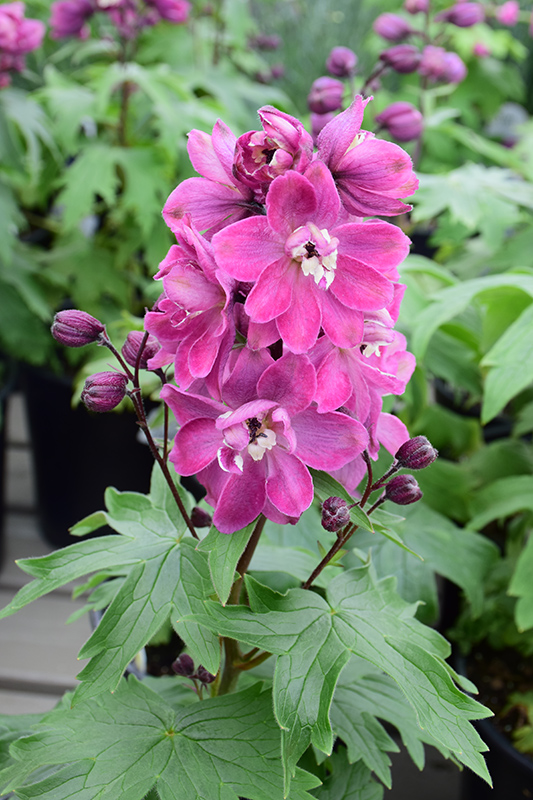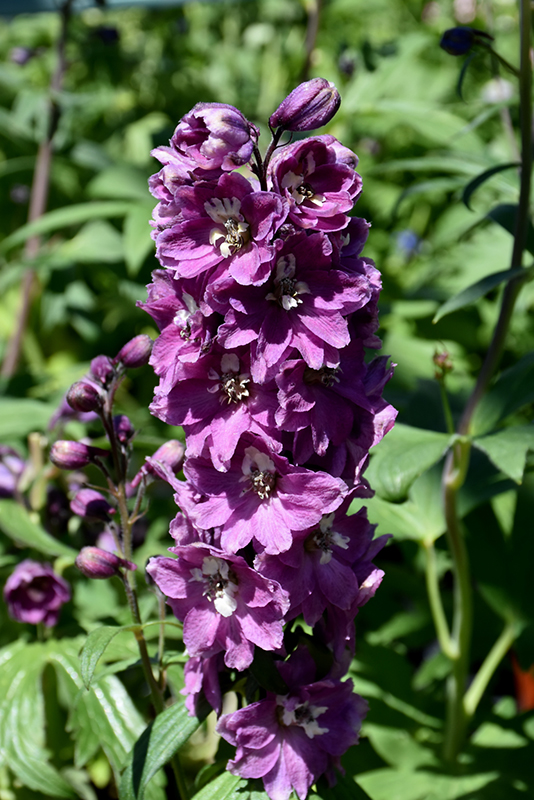VANDERMEER
PLANT LIBRARY
Find the perfect plant for your space by browsing through this extensive selection that we typically carry every year.
This library is for information purposes only.
Delphina™ Rose White Bee Larkspur
Delphinium 'Delphina Rose White Bee'
Plant Height: 14 inches
Flower Height: 20 inches
Spacing: 8 inches
Sunlight:
![]()
![]()
Hardiness Zone: 4a
Group/Class: Delphina™ Series
Brand: Syngenta Flowers
Description:
A naturally compact series presenting elegant rose-pink flowers with a white bee; dense flower spikes with strong stems and excellent uniformity; ideal for beds, or borders; first year flowering
Ornamental Features
Delphina™ Rose White Bee Larkspur features bold spikes of rose flowers with pink overtones and white centers rising above the foliage from early to mid summer. The flowers are excellent for cutting. Its deeply cut lobed leaves remain dark green in colour throughout the season. The dark red stems can be quite attractive.
Landscape Attributes
Delphina™ Rose White Bee Larkspur is an herbaceous perennial with a rigidly upright and towering form. Its relatively fine texture sets it apart from other garden plants with less refined foliage.
This plant will require occasional maintenance and upkeep, and should be cut back in late fall in preparation for winter. It is a good choice for attracting bees and butterflies to your yard. Gardeners should be aware of the following characteristic(s) that may warrant special consideration;
- Disease
Delphina™ Rose White Bee Larkspur is recommended for the following landscape applications;
- Mass Planting
- General Garden Use
Planting & Growing
Delphina™ Rose White Bee Larkspur will grow to be about 14 inches tall at maturity extending to 20 inches tall with the flowers, with a spread of 16 inches. When grown in masses or used as a bedding plant, individual plants should be spaced approximately 8 inches apart. It tends to be leggy, with a typical clearance of 1 foot from the ground, and should be underplanted with lower-growing perennials. The flower stalks can be weak and so it may require staking in exposed sites or excessively rich soils. It grows at a medium rate, and under ideal conditions can be expected to live for approximately 10 years. As an herbaceous perennial, this plant will usually die back to the crown each winter, and will regrow from the base each spring. Be careful not to disturb the crown in late winter when it may not be readily seen!
This plant does best in full sun to partial shade. It prefers to grow in average to moist conditions, and shouldn't be allowed to dry out. To help this plant achive its best flowering performance, periodically apply a flower-boosting fertilizer from early spring through into the active growing season. It is not particular as to soil type or pH. It is somewhat tolerant of urban pollution. This particular variety is an interspecific hybrid, and parts of it are known to be toxic to humans and animals, so care should be exercised in planting it around children and pets. It can be propagated by division; however, as a cultivated variety, be aware that it may be subject to certain restrictions or prohibitions on propagation.






